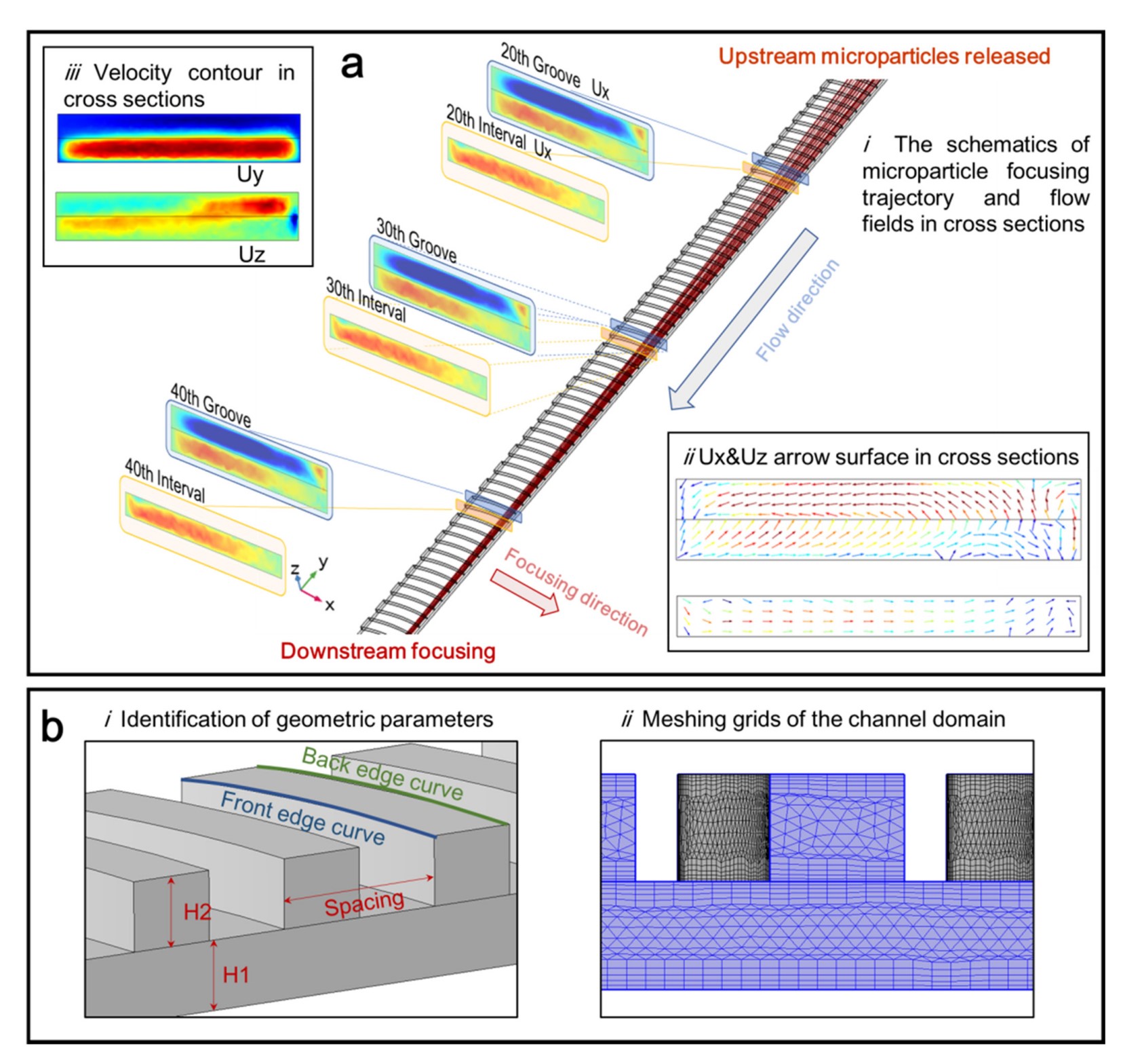Recently, Dr. Yan Sheng from the Institute of Advanced Study at Shenzhen University and collaborators from Nanyang Technological University published their work " Geometric optimization of double layered microchannel with grooves array for enabling nanoparticle manipulation " in the Physics of Fluids (IF=4.68).
In decades, technologies of microfluidic microparticle manipulation have been widely studied and exploited in biological and analytical chemical applications. Its blooming development in research and successful commercial technological transformation has been considered to be one of the microfluidic masterpieces. Microfluidic manipulation has been widely applied in bio-chemical research and applications, including bacteria/cell/protein mixing, separation, focusing, concentration, and trapping. One of the current severe challenges of this technique is to manipulate particles smaller than micrometer scale. In addition to multi-physical assists like acoustic and electrical fields, optimization of a structural design is a promising way to improve the functional capability of a microchannel.
In this work, the team built a robust and versatile numerical simulation model, validated with experiments, to reveal the mechanism of inertial microfluidic particle focusing within the double layered microchannel. In this study, a comprehensive investigation on the (geometrical and dimensional) optimization was further conducted with various numerical case studies. Based on the results, the fundamentals of the double layered microchannel with grooves were deeply revealed. In detail, the effects of microchannel geometric characteristics were discussed, including aspect ratio, groove curve radius, and groove spacing. In addition, an optimization strategy of geometrical and dimensional design was proposed to deeply exploit the manipulating potential of the microchannel. Based on the simulating calculation, the proposed optimized design of microchannel can remarkably improve the manipulating performance breaking through the manipulating limitation of manipulatable microparticle size, from microscale (4–10 μm) into nanoscale (500–800 nm), compared with the conventional microchannel. These findings provide the microfluidic technology, a great potential to manipulate numerous nanoscale microparticles like large protein and virus, rather than bacterium of microscale only in the past.
Original link:https://doi.org/10.1063/5.0152929



